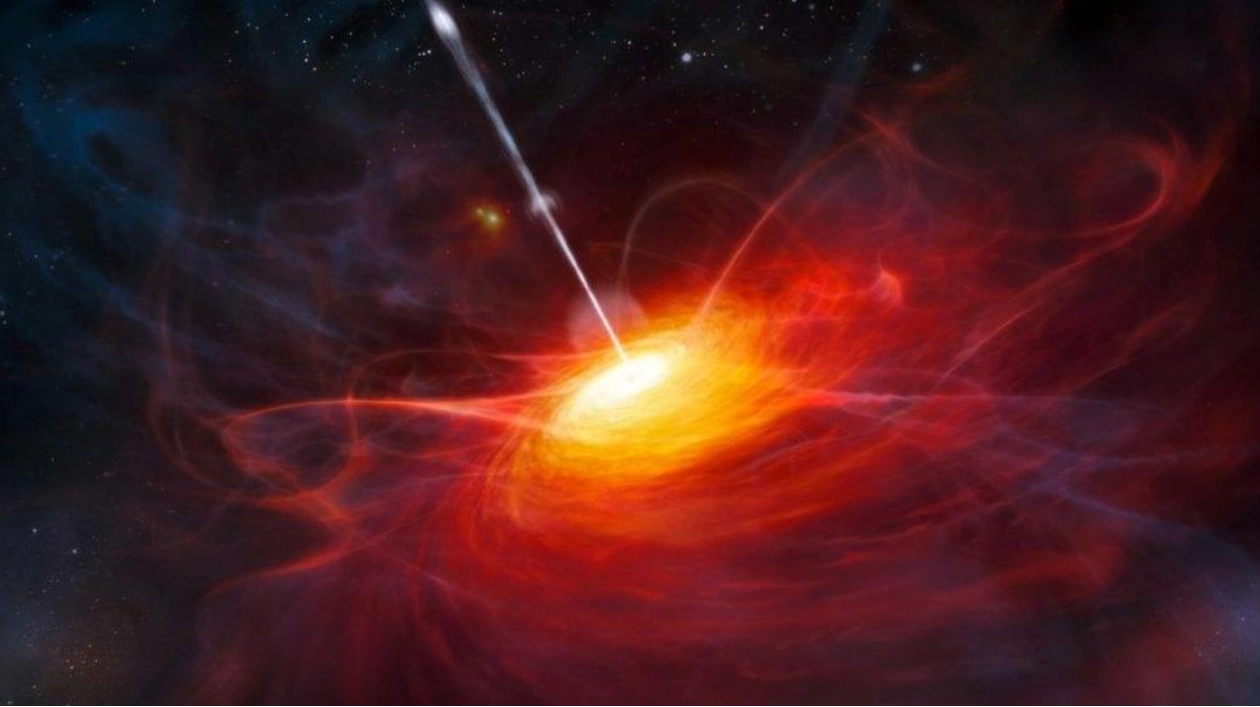The initial detection of starlight from a galaxy containing one of the most distant quasars ever recorded has unveiled an astronomical anomaly. Quasars, which are intensely luminous galactic cores, derive their brilliance from the extreme heat generated as gas swirls around a massive black hole. The black hole fueling a quasar located 13 billion light-years away from Earth is half the mass of all the stars in its host galaxy—a record-breaking ratio for a quasar host, as detailed in a paper submitted on October 14 to arXiv.org. Previous efforts to observe the host galaxy using the Hubble Space Telescope were unsuccessful. Consequently, astronomers turned to the James Webb Space Telescope (JWST) instead (SN: 6/20/23). The quasar, designated ULAS J1120+0641 and the fourth farthest known, outshines its galaxy by over 100 times (SN: 6/29/11). “This makes it extremely challenging to measure the [light] from the host galaxy,” explains Minghao Yue, an astronomer at MIT and a member of the research team. However, over the 13 billion years it took for the quasar’s light to reach us, the expansion of the universe has stretched the light waves by more than 700 percent. As a result, we observe the quasar’s visible light at infrared wavelengths, which is where JWST primarily operates.
The black hole powering the quasar is found to be 1.4 billion times the mass of the sun, consistent with earlier estimates. The new discovery is the detection of the host galaxy, whose stars collectively amount to 2.6 billion solar masses. This is relatively small compared to the Milky Way, which has a stellar mass of approximately 60 billion solar masses. However, at the time we see the quasar, about 750 million years after the Big Bang, all galaxies were in their infancy, and even the largest galaxies had fewer stars than modern giants like our own. What stands out is the disproportionate mass of the black hole: it constitutes 54 percent of its galaxy’s stellar mass, in stark contrast to the mere 0.1 percent for central black holes in contemporary giant galaxies. “This suggests that the coevolution of black holes and their host galaxies in the early universe was markedly different” from what we observe today, Yue notes. Avi Loeb, an astronomer at Harvard University, concurs. He posits that the quasar’s radiation has likely suppressed star formation in the host galaxy by heating its gas (SN: 8/16/24). For interstellar gas to collapse and form stars, it must be extremely cold; otherwise, thermal pressure pushes outward, preventing the gas from condensing into new stars. “If I had to speculate,” Loeb says, “the gas is not cold enough to spawn many stars.”
Loeb further explains that the quasar will eventually cease to exist. Once this happens, the gas in the surrounding galaxy can cool and form stars, thereby increasing the galaxy’s stellar mass. If we could observe the galaxy as it is today, the ratio of its black hole mass to its stellar mass might closely resemble that of giant galaxies nearby. Unfortunately, Yue points out, the new study does not address the enigma of how these colossal black holes grew so rapidly after the Big Bang (SN: 1/18/21). Nevertheless, the observations reveal another galaxy colliding with the one hosting the quasar. This collision likely spills gas into the black hole, augmenting its already substantial mass and illuminating the quasar, enabling astronomers to detect it across such an immense distance.
Source link: https://www.sciencenews.org






